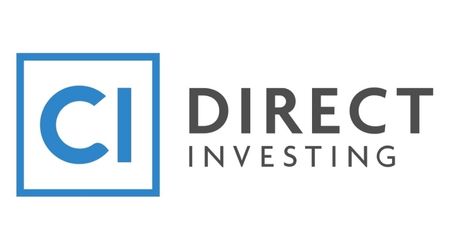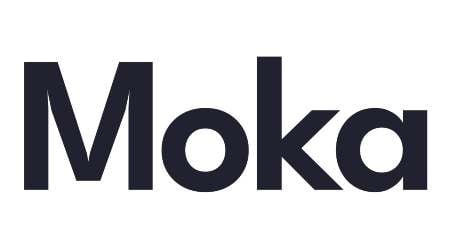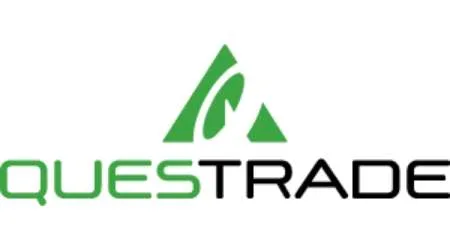Robo-advisors are automated financial services that manage your portfolio based on parameters you set, such as your financial goals, time frame, industry and sector, environmental impact and more.
You don’t have to worry about selecting an individual investment because robo-advisors typically come with pre-built portfolios that hold multiple exchange-traded funds (ETFs), stocks, bonds or cryptocurrencies. This makes robo-advisors worth considering, especially for those who don’t have time to choose investments themselves.
Robo advisor reviews

1. Wealthsimple Invest
One of the most established robo-advisors on the market, Wealthsimple Invest offers a lot of perks including no minimum deposit requirement, many accounts to choose from, tax-loss harvesting and socially responsible investment options (including Halal investments).
Wealthsimple Invest is a robo-advisor offering access to 3 different account levels: Wealthsimple Basic, Wealthsimple Black and Wealthsimple Generation.Pros
- Wealthsimple Invest claims you can get higher returns than savings accounts and standard investments.
- Optional one-on-one support from financial experts
- Open a Basic account with as little as $1
- Socially responsible investment options
Cons
- Fully online, so you can’t visit a branch or get in-person service.
- Slightly higher management fees (0.40%–0.50%) than other robo-advisors
- Black and Generation accounts, which come with lower management fees and other perks, require at least $100,000 and $500,000.

2. CI Direct Investing
CI Direct Investing offers access to an exclusive and personalized investment portfolio. Get up to $10,000 managed free for a year when you sign up for your first CI Direct Investing account and fund your account.CI Direct Investing uses a low-risk long-term investment strategy, balancing portfolios with a diverse range of stocks, bonds and real estate to promote long-term growth, reduce losses and generate cashflow.
Pros
- If you transfer over $5,000 from an existing account to your CI Direct Investing account, you’ll be reimbursed for any transfer fees charged by your current institution up to a maximum of $150.
- Choose between an ETF or Private Investment portfolio, and personalize depending on your investment amount and risk level.
- If you don’t have $1,000 to invest, you can contribute small portions to an account. Funds will automatically be invested once you reach $1,000.
Cons
- $1,000 minimum deposit
- Fully online, so you can’t visit a branch or get in-person service
- Fees range from 0.35% - 0.60% depending on your deposit. To get the lowest fees, you’ll need to invest at least $500,000.
Learn more about the CI Direct Investing robo-advisor in our review.

3. Justwealth
Justwealth robo-advisor offers an expansive list of pre-designed portfolios. Once you input detailed information about your savings goals and risk appetite, you’ll be matched with a portfolio that meets your needs and budget.You’ll also work with a portfolio manager to purchase investments. Every portfolio includes a basket of exchange traded funds (ETFs), which are similar to mutual funds except with lower fees. So, you’ll spend much less to manage your account than if you went with a typical mutual fund broker.
Pros
- Many different portfolios including tax-optimized, US currency and income-generating accounts
- Request a complimentary portfolio review from a financial professional at any time
- RESP accounts require no minimum deposit to begin investing.
Cons
- $5,000 minimum deposit
- Fully online, so you can’t visit a branch or get in-person service

Pros
- Moka‘s cashback Perks Program for monthly subscribers offers exclusive monthly deals and discounts with brands like UberEats, Apple Music, Footlocker, and more.
- Chat with Moka advisors in real time through the app
- Access your earnings at no extra cost with free, next-day withdrawals
Cons
- Pay a monthly fee of $20 plus 0.05% - 0.37% for regular portfolios and 0.20% - 0.60% for SRI portfolios
- Fully online, so you can’t visit a branch or get in-person service
Learn more about the Moka robo-advisor in our review.

5. Questwealth Portfolios
Questwealth Portfolios (by Questrade) offers many account types and low fees ranging from 0.20% - 0.25%. Portfolios are actively managed and dynamically rebalanced according to market conditions.Plus, you can qualify for lower fees by linking your account with accounts held by your close friends and family members.
Pros
- Low fee of 0.20% - 0.25%
- Professionals are available to adjust your portfolio, which can help reduce risk and maximize gains
- Get $25 for every friend who opens an account, and get a $50 bonus for every third referral.
Cons
- Fully online, so you can’t visit a branch or get in-person service
Learn more about the Questwealth Portfolios robo-advisor in our review.
How to compare and find the best robo-advisors
To find the best robo-advisor for your situation, here’s what to consider:
- Fees. Percentage-based fees may be more advantageous for smaller portfolios, while flat fees are more likely to benefit large portfolios.
- Human support. Those new to investing may feel uncomfortable leaving their money in the hands of a digital algorithm. If that’s the case, seek a platform that offers human customer support.
- Tax-optimization. Some robo-advisors offer tax-loss harvesting, a feature designed to lessen the impact of capital gains tax. But not all advisors are equipped with this feature.
Are robo-advisors worth it?
If you don’t have the time to research individual companies and don’t want to invest in a single index ETF that tracks a major index like the S&P 500 or Nasdaq, robo-advisors are definitely worth considering. Robo-advising fees are low or on par with single index ETFs, and you don’t have to worry about rebalancing your portfolio.
Some robo-advisors even do the tax-loss harvesting for you, which can be valuable to investors who make more than $40,000 annually.
Who is a robo-advisor best for?
Robo-advisors are best for hands-off investors who want to grow their wealth but don’t want to actively manage their portfolios.
Robo-advisors are also a solid pick for beginners exploring their investment options for the first time. If you’re hesitant to enter the market, a robo-advisor can provide the support and guidance you need to start learning the ropes.
Bottom line
- Robo-advisors are financial services that manage your portfolio based on your set parameters.
- Once you input your financial goals, risk and other relevant data, a computer algorithm will allocate your funds and constantly rebalance your portfolio.
- Most robo-advisors come with an annual fee, typically as a percentage of your portfolio, and have certain investment minimums. Make sure you compare robo-advisors before you invest your funds.
Frequently asked questions
More on investing

What are the best stocks for beginners with little money to invest?
Want to dive into investing but don’t have much to spend? Take a look at these types of stocks.
Read more…
Meme stocks: What they are and examples of popular stocks
Meme stocks can produce large gains in short periods, but the stocks are volatile.
Read more…
How do ETFs work?
Your guide to how ETFs work and whether this type of investment is right for you.
Read more…More guides on Finder
-
How to trade futures
Futures trading can be rewarding, but it’s not for everyone. Learn the steps to trade futures, including examples and fees to consider.
-
Investment calculator
Use this calculator to find out how much you can grow your money.
-
Investing in your 40s: 8 ways to prepare for retirement
How to invest for retirement: 8 ways to safeguard your portfolio.
-
6 places to find investment advice
Tips for beginning investors and high net-worth individuals alike.
-
Retirement planning
Get actionable tips on how to prepare for your ideal retirement.
-
Investing in your 30s: 8 wealth-building tips
Prepare to revamp your asset allocation and explore new investment classes when you’re in your 30s.
-
How to start investing in your 20s: The 7 tips for beginners
Read our 7 tips for starting a portfolio if you’re new to investing.
-
Real estate investment
Check out these real estate investment options from REITs and rentals to mutual funds, house flipping and more.
-
Questwealth Portfolios vs Wealthsimple: Which robo-advisor is right for you?
Find out which of these popular Canadian robo-advisors you should choose to for your financial situation.
-
What are bonds?
Bonds are fixed-income assets that earn interest. But bonds may underperform other asset classes in the long run.
